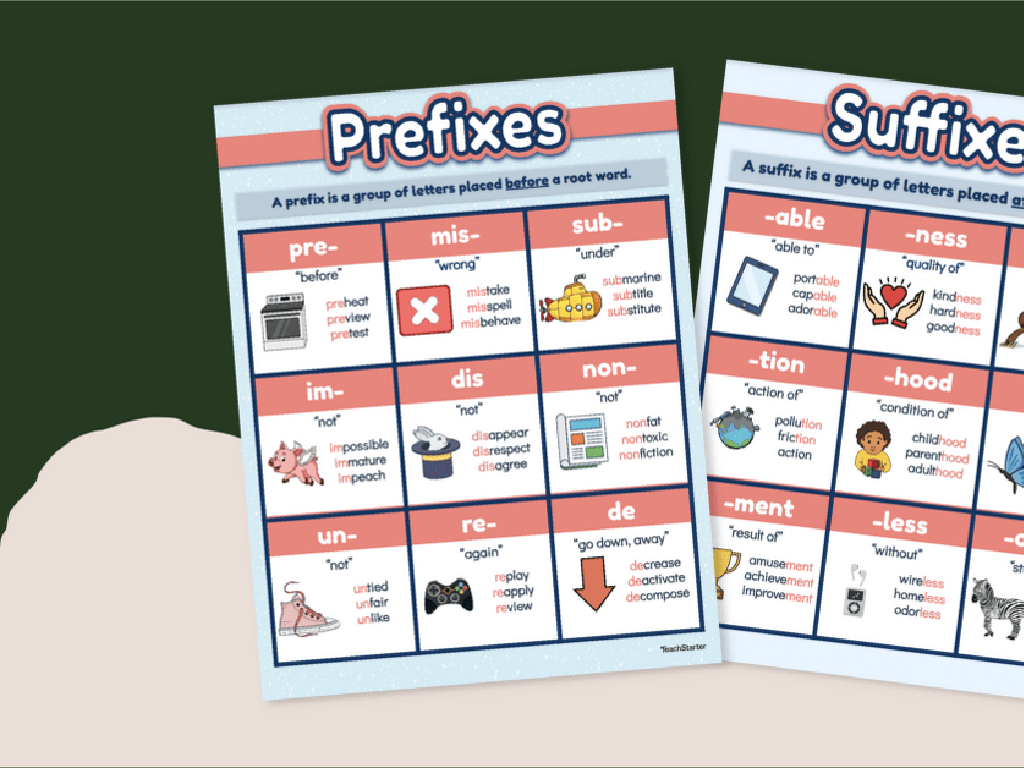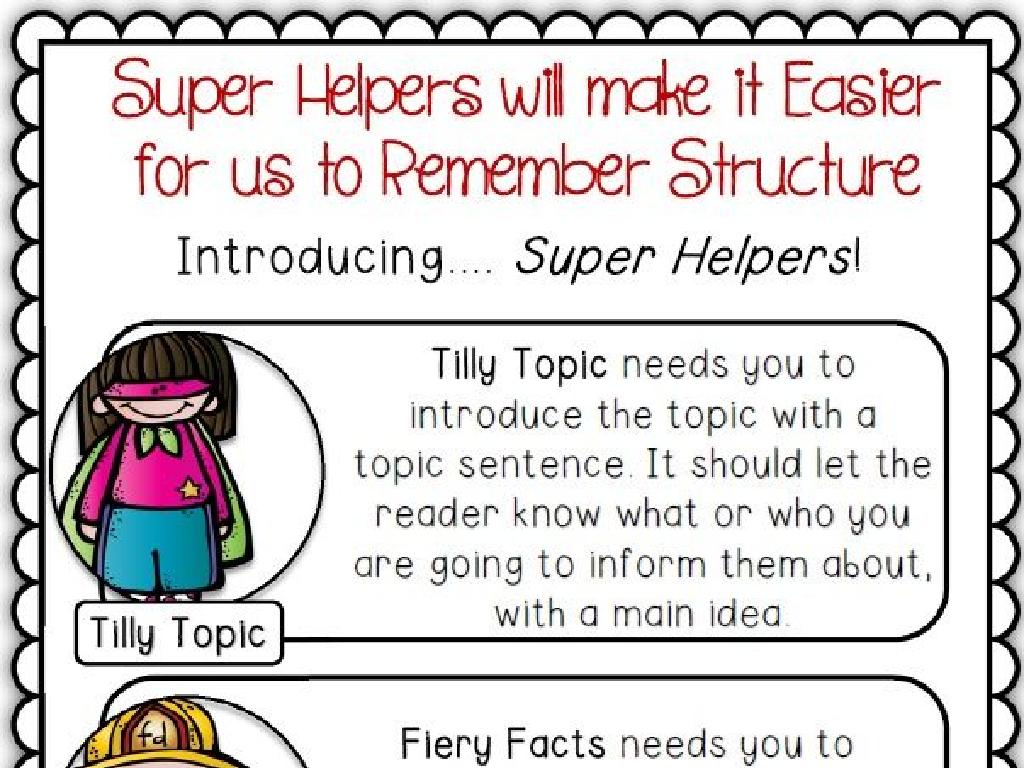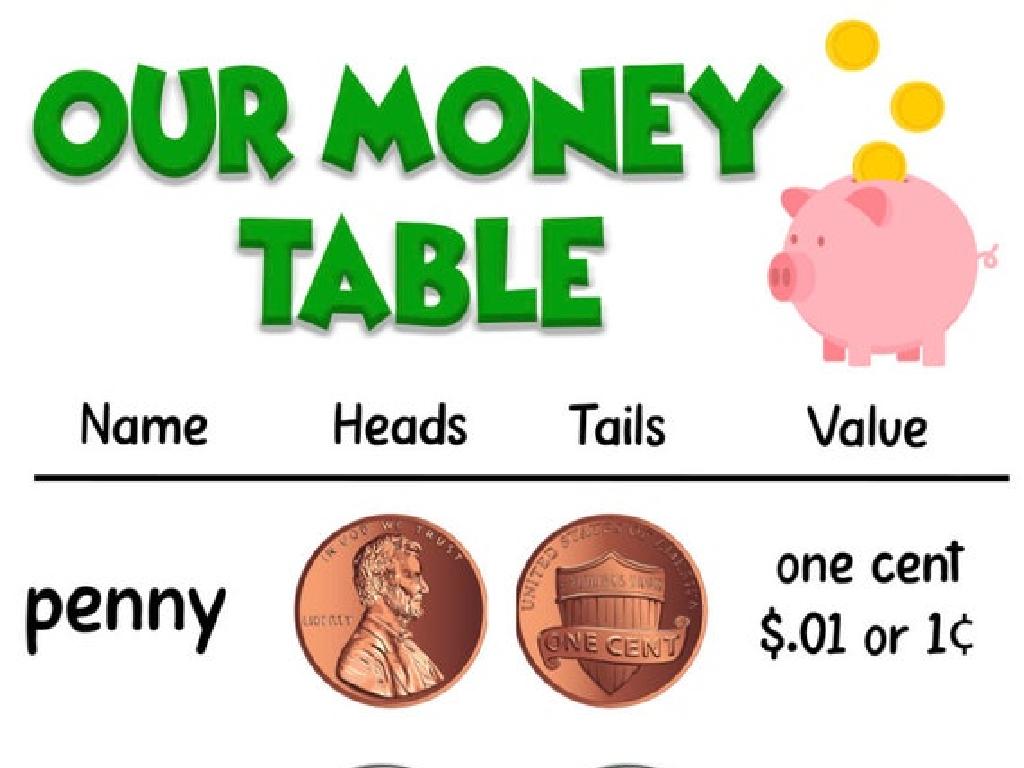The New Deal
Subject: Social studies
Grade: Fourth grade
Topic: 20Th Century American History
Please LOG IN to download the presentation. Access is available to registered users only.
View More Content
Exploring the New Deal
– Introduction to the 20th Century
– Timeline leading to the New Deal
– The Great Depression’s impact and the need for change.
– Significance of the New Deal
– New Deal: a series of programs to help people get jobs and support.
– Why study the New Deal?
– Learning history helps us understand today’s world.
|
This slide introduces students to the New Deal within the context of 20th Century American History. Begin with a brief overview of the 20th Century, highlighting key events that shaped the nation. Discuss the timeline of events that led to the implementation of the New Deal, particularly the Great Depression and its severe economic and social impacts. Explain the New Deal as President Franklin D. Roosevelt’s response to help Americans recover, focusing on its significance in creating jobs and providing support to those in need. Emphasize the importance of studying historical events like the New Deal to understand how they influence our current society and government policies. Encourage students to think about how learning from the past can help us make better decisions for the future.
Life Before the New Deal
– The Great Depression era
– A time of economic hardship where many people lost jobs and struggled to afford basic needs.
– Families during the Depression
– Many families faced poverty, hunger, and loss of their homes.
– Impact on daily life
– People had to find creative ways to survive, like growing their own food or bartering.
– The call for change
– The struggles led to a demand for government help, setting the stage for the New Deal.
|
This slide aims to set the historical context for the New Deal by describing the difficult circumstances of the Great Depression. It’s important to convey to the students the severity of the economic downturn and its profound effects on American families. Highlight the widespread unemployment, poverty, and the struggle for survival that characterized the era. Emphasize how these challenges led to a widespread desire for change and government intervention, which paved the way for President Franklin D. Roosevelt’s New Deal. Use this discussion to build empathy and understanding of the hardships people faced, and how it led to significant political and social reforms.
President Franklin D. Roosevelt and The New Deal
– Who was President Roosevelt?
– He was the 32nd President of the USA.
– His goals for America
– To help people get jobs and recover from the Great Depression.
– Introducing the New Deal
– A series of programs to improve the economy and help people.
|
This slide introduces President Franklin D. Roosevelt, who served as the 32nd President of the United States during a time of great economic hardship known as the Great Depression. His main goals were to provide immediate economic relief, help the nation recover, and reform the financial system to prevent future depressions. The New Deal was his signature series of programs and policies aimed at achieving these goals. It included initiatives to create jobs, build infrastructure, and support farmers and the unemployed. When discussing this slide, emphasize Roosevelt’s leadership during a tough time in American history and how his New Deal aimed to make life better for many Americans.
The New Deal: The Three R’s
– Relief for the unemployed
– Immediate help for those without jobs
– Recovery for the economy
– Efforts to help the nation’s economy grow
– Reform to prevent future crises
– Changes to laws to avoid another depression
|
The Three R’s of the New Deal represent the goals set by President Franklin D. Roosevelt during the Great Depression. ‘Relief’ aimed to provide immediate assistance to the unemployed through programs like the Civilian Conservation Corps (CCC). ‘Recovery’ focused on initiatives to help the economy bounce back, such as the Agricultural Adjustment Act (AAA). ‘Reform’ involved creating new laws to prevent future economic disasters, like the Federal Deposit Insurance Corporation (FDIC) to protect people’s savings. These efforts were crucial in helping the United States recover from one of its most challenging times. Encourage students to think about how these measures could help people in difficult times and relate it to helping classmates in need.
Major Programs of the New Deal
– Civilian Conservation Corps
– CCC helped conserve our forests and parks
– Works Progress Administration
– WPA created jobs building roads and buildings
– Social Security Act
– Provided financial help to the elderly
|
The New Deal was a series of programs and projects instituted during the Great Depression by President Franklin D. Roosevelt aimed at restoring prosperity to Americans. When presenting this slide, explain that the Civilian Conservation Corps (CCC) was a program that provided jobs for young men to plant trees, build bridges, and improve parks. The Works Progress Administration (WPA) was another program that helped create jobs for many Americans in construction and arts projects. Lastly, the Social Security Act was a program that helped older Americans, children, and the unemployed by providing financial benefits. Encourage students to think about how these programs might have helped people during tough times and how similar programs might help people today.
Impact of the New Deal
– New Deal’s help to Americans
– Created jobs and improved lives
– Long-term societal changes
– Social Security & labor rights
– Government’s role expansion
– More government in daily life
– Critiques and praises overview
– Debates on effectiveness & cost
|
This slide aims to discuss the various impacts of the New Deal on American society and government. It’s important to highlight how the New Deal provided relief to many Americans during the Great Depression by creating jobs and introducing social welfare programs. Long-term effects include the establishment of Social Security and the enhancement of labor rights, which reshaped the social fabric of the nation. Additionally, the New Deal marked a significant increase in the government’s role in the economy and citizens’ daily lives. While the New Deal is often praised for these contributions, it also faced criticism for increasing government spending and intervention. Encourage students to think about how these changes continue to affect our lives today and to consider different perspectives on the New Deal’s legacy.
The New Deal in Action: Community Impact
– New Deal projects around us
– Look at local buildings, parks, and art from the New Deal era
– Lasting benefits of these projects
– These projects created jobs and landmarks that we still use
– How they improve our daily life
– Think about schools, libraries, and post offices built back then
– Discussing our community’s New Deal legacy
|
This slide aims to connect the historical concept of The New Deal to the students’ immediate environment by identifying local projects that were part of this initiative. Encourage the students to think about the lasting impact of The New Deal, such as infrastructure and public works that are still in use today. Discuss how these projects have continued to benefit the community by providing essential services and improving the quality of life. Use local examples to make the connection more tangible, such as a nearby park or a historic post office. This will help students understand the relevance of historical policies in their current lives and the importance of government initiatives aimed at public welfare.
Class Activity: New Deal Poster Creation
– Design a New Deal program poster
– Illustrate the program’s objectives
What was the program trying to achieve?
– Explain the program’s effects
How did the program help people?
– Present your poster to classmates
|
This activity is designed to engage students with the New Deal in a creative and interactive way. Students will select a New Deal program such as the CCC, WPA, or SSA and create a poster that highlights the program’s goals and its impact on American society. Encourage students to use bold titles, vivid images, and clear text to convey their message. They should research their chosen program to understand its purpose and effects. After creating their posters, students will present them to the class, explaining what they learned about the program. This will help students develop their public speaking skills and deepen their understanding of the New Deal’s role in American history. Possible variations of the activity could include creating a digital poster, working in groups, or even role-playing as historical figures involved in the programs.






